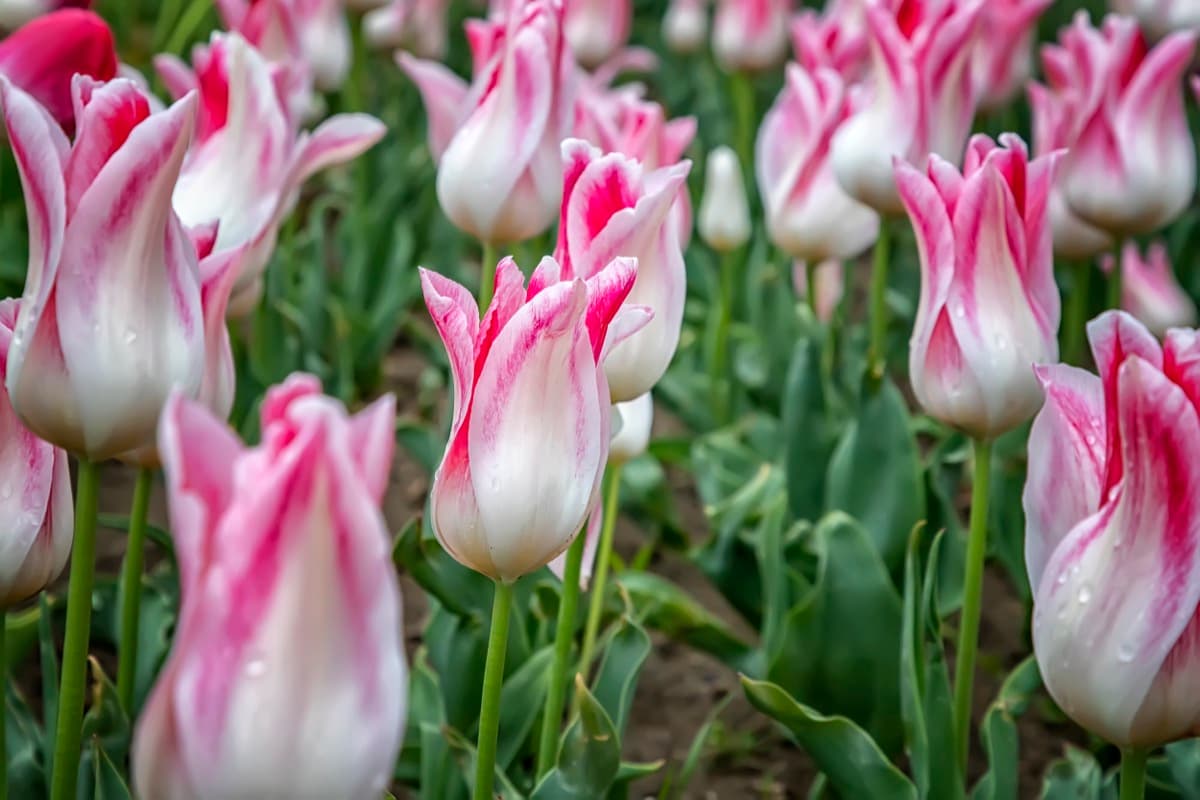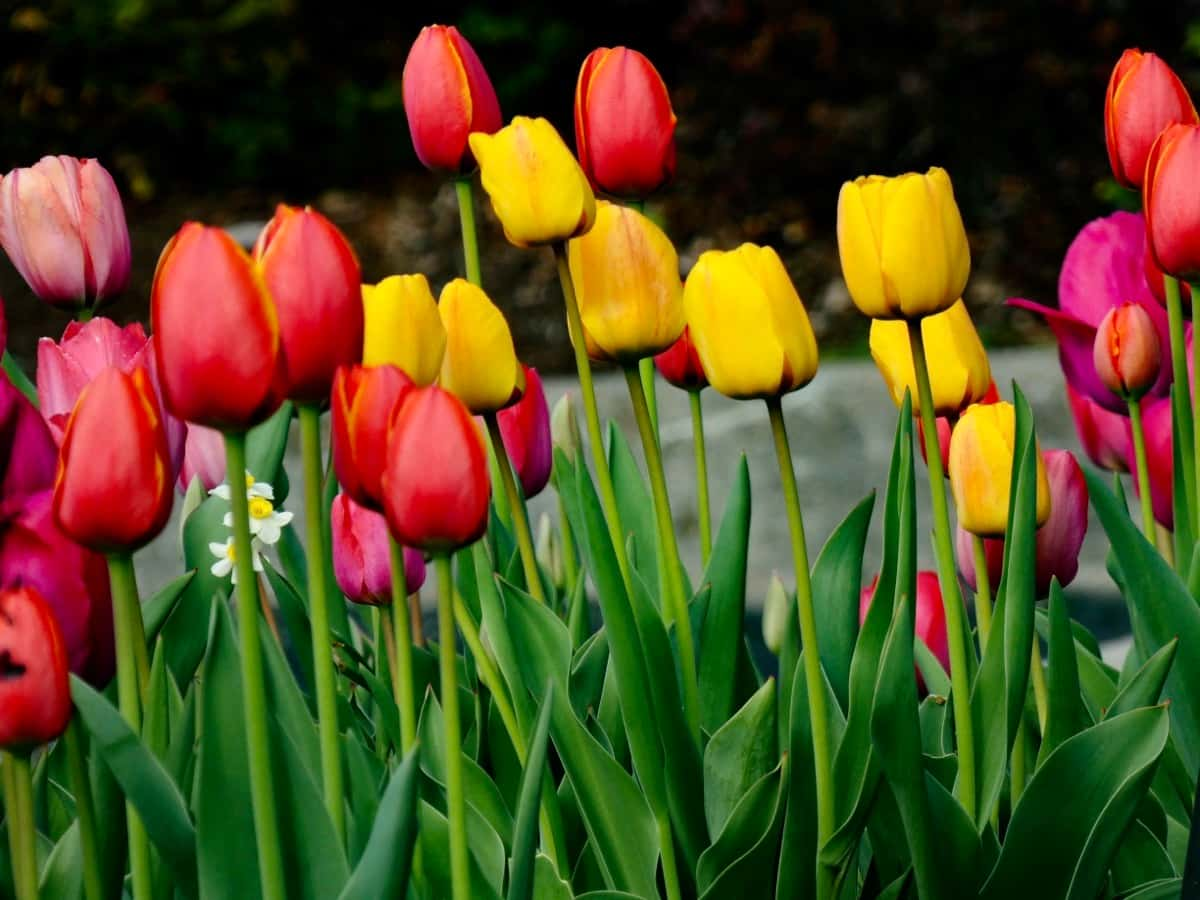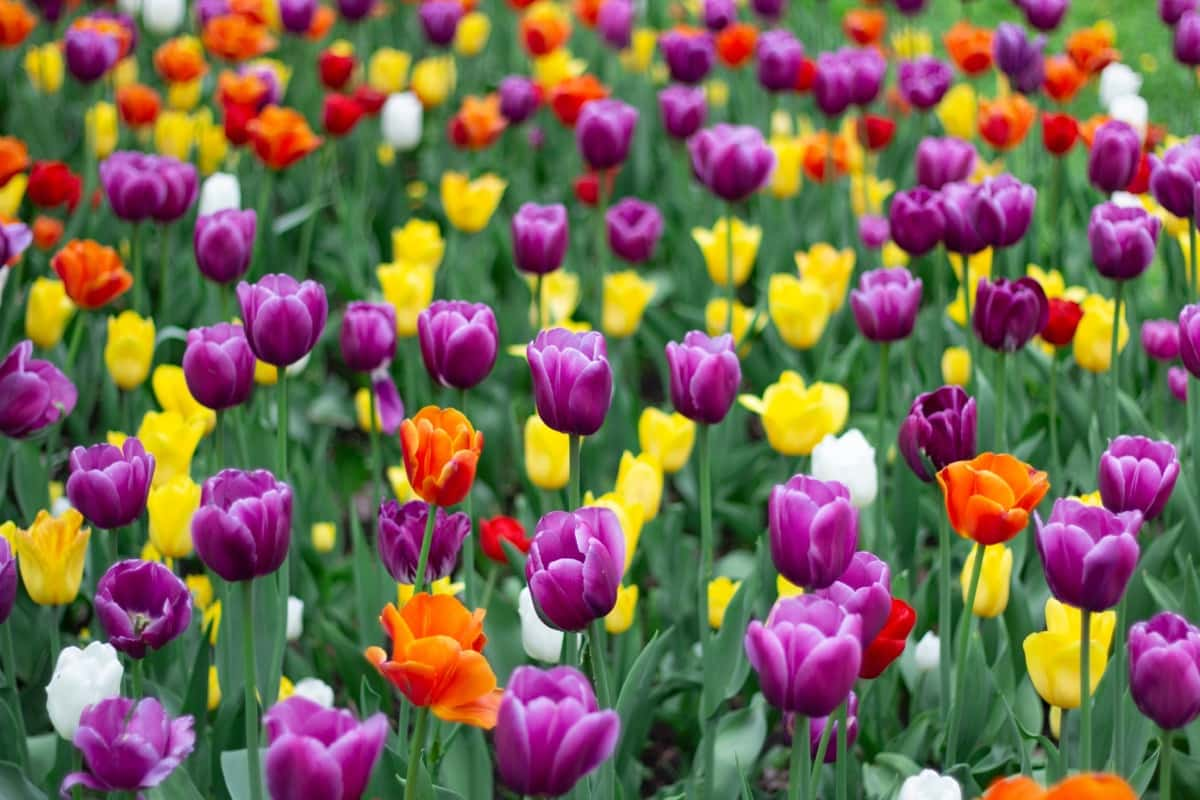If you’re wondering how to grow tulips indoors, the answer lies in container gardening. This method allows you to enjoy the beauty of tulips, even if your available outdoor space is limited. One question often arises is how to plant tulip bulbs in pots. Just like in-ground planting, you’ll want to place the bulbs with the pointed end facing up and cover them with soil so the top of the bulb is around six inches beneath the soil’s surface.

The pot you choose needs adequate drainage to prevent water from sitting at the bottom and rotting your bulbs. Planting tulips in pots over winter involves 12 to 16 weeks of chilling at temperatures between 35 to 48 degrees Fahrenheit. This can be accomplished by placing the potted bulbs in a cool, dark location like a garage or refrigerator.
How to Grow and Care for Tulips
Best Practices for Planting Tulip Bulbs in the Fall
Planting tulips involves a few crucial steps that, if followed, will yield a beautiful blooming garden in the spring. The timing of when to plant tulips is important. It would be best to plant the tulip bulbs in the fall, around six to eight weeks before the ground freezes. The soil temperature should be less than 60 degrees Fahrenheit. This allows the bulb to establish roots before the winter freeze sets in, preparing it for a vibrant bloom when the weather warms.
Essential Tips for Ensuring Proper Tulip Bulb Storage
Before planting, proper storage of the tulip bulbs is essential. If you’ve bought the bulbs in advance or have some leftovers from the previous year, they must be stored in a cool, dark, and dry place. The ideal temperature range for bulb storage is between 50 to 60 degrees Fahrenheit.
Optimal Soil Preparation for Healthy Tulip Growth
Regarding how to take care of tulips in soil, soil preparation is key. Tulips need well-draining soil as they do not tolerate water-logged conditions. Adding compost or organic matter enhances soil texture and fertility. A high-quality potting mix with some organic matter works best for potted tulips.
Watering Strategies for Promoting Vibrant Tulip Blooms
After planting, water the bulbs well so that the moisture reaches the bottom of the hole where the bulbs are. Then, during the growing season, water regularly, but ensure the soil never gets soggy. Overwatering can lead to bulb and root rot. When the tulip leaves start to yellow and die off after flowering, watering gradually reduces.
Protecting Tulips From Common Pests and Diseases
Just like any other plant, tulips are susceptible to pests and diseases. Regularly monitor your tulips for signs of damage or unusual changes. Common pests include aphids, squirrels, and rabbits, while the most common diseases are bulb rot and tulip fire, a fungal disease causing spots on the leaves. Using fences or plant cages can deter larger pests, while natural insecticides can help with smaller insects.
In case you missed it: 10 Reasons Why Your Roses Aren’t Blooming: Treatment and Solutions

Choosing the Right Tulip Varieties for Your Garden
Hundreds of tulip varieties are available, each with its unique color, shape, and bloom time. Consider choosing a combination of early, mid, and late-season blooming varieties for continuous spring color. Some popular choices include the early blooming ‘Princess Irene’ with its orange and purple flames, the mid-season ‘Blue Spectacle’ for something a bit different, and the late blooming ‘Queen of the Night’ with its dark, almost black flowers.
Maximizing Tulip Blooms Through Proper Fertilization
Fertilization plays a major role in ensuring lush, healthy blooms. Apply a slow-release fertilizer at the planting time and again in the spring when the shoots first appear. Choose a balanced fertilizer with equal parts nitrogen, phosphorus, and potassium. This will provide all the necessary nutrients for your tulips to flourish.
Extending the Tulip Blooming Season With Smart Techniques
Getting tulips to bloom throughout the spring involves clever selection and planting of different varieties. Mixing early, mid, and late-season tulips allows you to transition blooms in your garden or pots seamlessly. Stagger the planting depth of your bulbs – deeper planted bulbs bloom later, extending the bloom time. Remember that tulips need plenty of suns to bloom, so ensure they are planted in a sunny spot or move your pots around to catch the sun.
Overwintering Tulip Bulbs for Reliable Annual Growth
Planting pot tulips over winter is a great strategy for reliable annual growth. Once the leaves turn yellow and fall, decrease watering and let the soil dry out. Then, remove the bulbs, clean off any soil, and store them in a cool, dry place until the next fall planting season. If you live in a colder climate, the pots can be left outside if they are frost resistant and the bulbs are planted deep enough.
How to Take Care of Tulips in Vase
Once your tulips have bloomed, you might want to bring some of that beauty indoors. When cutting tulips for a vase, do so early in the morning when they are most hydrated. Choose tulips just about to bloom, and they’ll open up fully inside. Cut the stems at an angle and put them in a vase with room-temperature water after entering. Trim the stems every few days and change the water regularly to prolong their life.
How to Take Care of Tulip Plant
Beyond the soil, watering, and fertilization, a key aspect of taking care of tulip plants involves appropriate care post-flowering. Once tulips have finished blooming, it’s essential to deadhead them – remove the faded flowers so the plant doesn’t waste energy on producing seeds. However, leave the foliage until it’s completely died off, as it will gather sunlight and nourish the next year’s flowers.
How to Care for Tulips Outside
Outdoor tulips require the same basic care as those grown in pots – appropriate soil, sufficient water, and protection from pests. However, you must also consider how they fit into your garden design. Planting in clusters often gives the most visually pleasing result. Also, plant in a sunny location, as tulips need daily sunshine to bloom their best. Consider companion planting with annuals or perennials to fill the gap when the tulips have died.
In case you missed it: The Best Fertilizer for Tulips: When and How to Apply

Conclusion
Growing and caring for tulips involves more than just planting bulbs and hoping they grow. By providing the right conditions and care, you can enjoy a beautiful display of this iconic spring flowers year after year. Whether you want to know how to plant tulip bulbs in pots, grow tulips indoors, or take care of tulips in a vase, this guide has you covered. With these tips and techniques, your tulips will survive and thrive, bringing you much joy during the spring blooming season.
- Feed Your Flock for Less: Top 10 Tips to Save on Chicken Feed
- Ultimate Guide to Ossabaw Island Hog: Breeding, Raising, Diet, and Care
- Hatching Answers: The Top 10 Reasons Your Chickens Aren’t Laying Eggs
- Eggs and Economics: Breaking Down the Cost of Raising Backyard Chickens
- Defend Your Greens: Proven Methods to Keep Iguanas Out of Your Garden
- Ultimate Guide to Cinnamon Queen Chicken: A Comprehensive Guide for Beginners
- Ultimate Guide to California Tan Chicken: Breeding, Raising, Diet, Egg-Production and Care
- Ultimate Guide to Marsh Daisy Chicken: Breeding, Raising, Diet, and Care
- 10 Types of Chicken Farming Businesses You Can Start for Profits